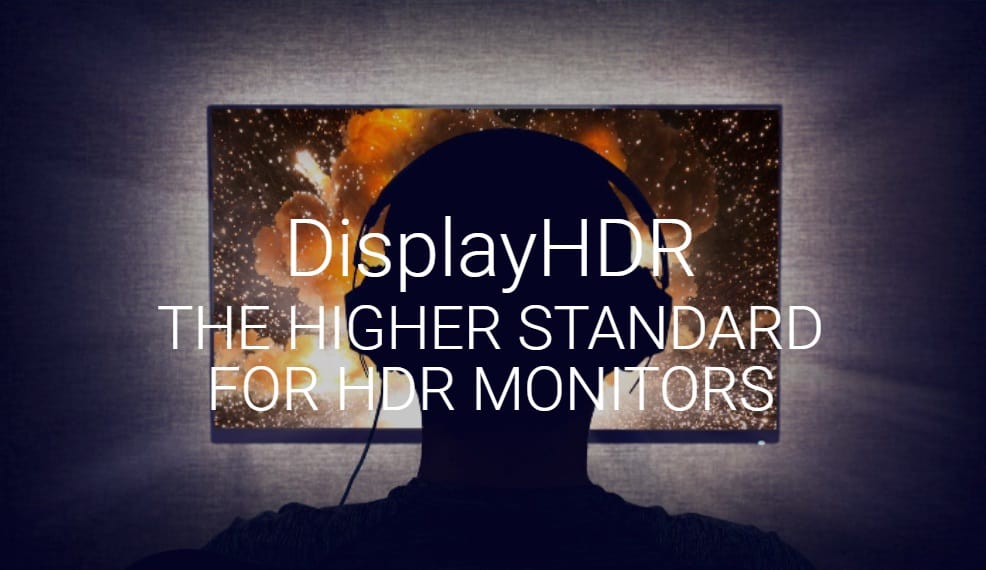SDR or “standard dynamic range” is becoming very common in monitor devices. But the SDR display does not provide a screen display that looks more real. So to display more real content, HDR technology is needed.
HDR technology being a superior feature of the monitor will make the image effect on the screen better and more real. What exactly is the function of the HDR technology, here we will discuss it.
What is HDR?
HDR stands for “high dynamic range” or high dynamic range. Basically it is a feature to increase the contrast ratio on the monitor screen, distinguishing between bright areas and dark areas in the image.
When HDR is enabled, the monitor will provide a higher brightness (brighter) and darker (or darker) black according to the content of the displayed image. The benefits of these capabilities allow the screen to be able to display image visualizations that are more vivid and realistic as in real life.

HDR technology also provides a more detailed look at areas of color that look dark, thanks to its high contrast.
HDR monitors are used for playing games, watching movies, video content creators, and illustrations.
HDR monitors must also support HDR input formats, including HDR10, HDR10+, Dolby Vision, and HLG. It doesn’t have to support everything, at least HDR10. These formats are HDR video encoding standards. The point is that the monitor must be able to read HDR content from the connected device.ADVERTISEMENT
Colors in HDR
Standard or generic displays have a color range called sRGB. While HDR displays provide an even wider range of colors ( above sRGB ), this range is called DCI-P3. With the DCI-P3 color gamut coverage, HDR monitors can look more colorful.
Brightness and HDR
As previously explained, to be able to use the HDR feature, the monitor requires a very bright brightness level. In human perception the brightness of HDR will look greater than SDR. Provides diverse gradations with fine detail in each area.
If you find a screen specification that says “peak brightness”, that is the peak brightness level that can be achieved by the screen itself. These brightness levels are achievable and are only used when displaying HDR content.
HDR is not screen resolution
Resolution is the number of pixels on the screen, has a function to provide sharp details on the screen, while HDR is a separate technology. Monitor screens with HD, FHD, QHD and UHD resolutions can all support HDR, if the monitor panel meets HDR requirements.ADVERTISEMENT
DisplayHDR Certification
To find out whether the HDR performance level is good or not, then you need to know the HDR certification on the monitor. One of the current HDR certifications comes from VESA.

VESA DisplayHDR is the first open global standard certification to define HDR performance. This certification is used to determine HDR quality, with assessments that include exposure/contrast, color gamut, color depth and rise time. And also ensures that the color reproduction and contrast produced by the monitor can be accurate.
If a monitor claims to only write HDR or HDR 400, it’s likely that the product doesn’t meet the criteria set by VESA.
A good and quality HDR monitor certainly has a VESA certification, because it provides more visible performance ( True HDR ). For valid certification will display the VESA CERTIFIED DisplayHDR logo as shown below.
Various levels of VESA CERTIFIED DisplayHDR

DisplayHDR 400 , being the lowest level of HDR certification, requires the monitor to:
- Supports pure 8-bit image quality instead of 6-bit + 2 FRC.
- Global dimming – improves dynamic contrast ratio.
- The peak brightness is 400 cd/m 2 (nits), which is twice as high as a regular SDR.
- The color gamut and contrast exceed the usual SDR (sRGB).
ADVERTISEMENT

DisplayHDR 500 , has local dimming in the background:
- Peak brightness reaches 500 cd/m 2 .
- Wider color gamut, at least 90% DCI-P3.
- It has local dimming, in which the area that is displayed is dark, the brightness can be lowered in that area only.
- Supports a minimum of 10-bit color (or 8-bit + 2-bit FRC).

DisplayHDR 600 , began to be targeted at enthusiasts of professional-class laptops and high-performance monitors. Delivers intense brightness and deep blacks:
- Peak brightness reaches 600 cd/m 2 .
- Wider color gamut, at least 90% DCI-P3.
- It has local dimming of the contrast ratio in real time, to produce strong brightness and deep blacks.
- Supports a minimum of 10-bit color (or 8-bit + 2-bit FRC).

DisplayHDR 1000 , starting to be targeted at professional class or content creators. Can provide ultra realistic effects in games and movies.
- Peak brightness reaches 1000 cd/m 2 , for ideal performance in content creation.
- Wide color gamut, at least 90% DCI-P3.
- It has local dimming with 2x the contrast level of the DisplayHDR 600.
- Supports a minimum of 10-bit color (or 8-bit + 2-bit FRC).
ADVERTISEMENT

DisplayHDR 1400 , started targeting professional content creators. Provides ultra realistic effects in games and movies.
- Peak brightness reaches 1000 cd/m 2 , for ideal performance in content creation.
- Wider color gamut increase up to 95% DCI-P3 more.
- 3.5X greater dynamic contrast ratio than DisplayHDR 1000 levels.
- Supports a minimum of 10-bit color (or 8-bit + 2-bit FRC).

DisplayHDR True Black 400 , delivers extremely deep and accurate black details, and provides an even more extraordinary experience.
- Peak brightness reaches 400 cd/m 2 .
- The lowest black level is up to 0.0005 cd/m 2 .
- Delivers up to 50x greater dynamic range and 4x faster uptime over DisplayHDR 1000.
- Supports a minimum of 10-bit color (or 8-bit + 2-bit FRC).

The DisplayHDR True Black 500 , has the same capabilities as the DisplayHDR True Black 400 , with a peak brightness increase of up to 500 cd/m 2 .
- Peak brightness reaches 500 cd/m 2 .
- The lowest black level is up to 0.0005 cd/m 2 .
- Delivers up to 50x greater dynamic range and 4x faster uptime over DisplayHDR 1000.
- Supports a minimum of 10-bit color (or 8-bit + 2-bit FRC).

The DisplayHDR True Black 600 , has the same capabilities as the DisplayHDR True Black 500 , with a peak brightness increase of up to 600 cd/m 2 .
- Peak brightness reaches 600 cd/m 2 .
- The lowest black level is up to 0.0005 cd/m 2 .
- Delivers up to 50x greater dynamic range and 4x faster uptime over DisplayHDR 1000.
- Supports a minimum of 10-bit color (or 8-bit + 2-bit FRC).
For more details check the site displayhdr.org






